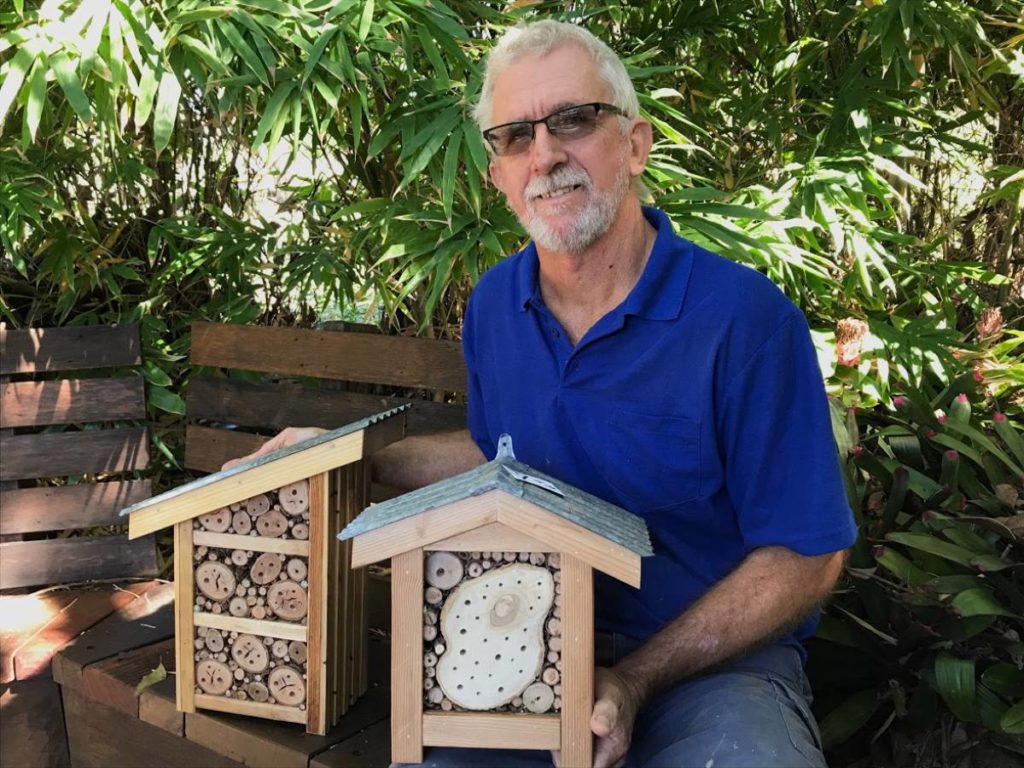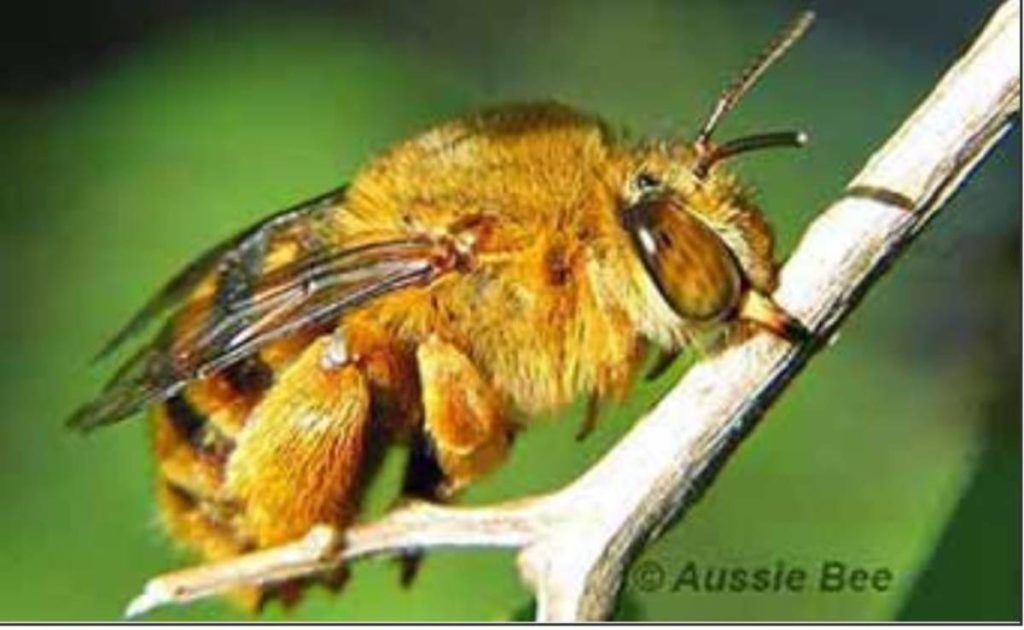
Lester Rehbein is using his skills as a carpenter to create insect motels to give solitary bees a home of their own.
Lester and his wife Cathie first discovered insect motels on a trip to Europe a few years ago, but at the time they didn’t realise the small house-shaped structures served a significant purpose.
“My wife and I went to Germany in 2017, and we saw these wooden structures and we didn’t realise what it was, we sort of just thought it was some form of artwork,” Lester said.
“When we got home, I looked it up on the internet and realised they were insect motels, for insects such as solitary bees.

“I made my first insect home about 18 months ago, and as they’ve become more popular and as I’ve had a little more time on my hands I have made more.”
An insect motel, also known as a bug hotel or insect house, is a man-made structure created to provide shelter for insects. They can come in a variety of shapes and sizes depending on the specific purpose or specific insect it is catered to.
Lester said insect motels were fantastic at providing a habitat for solitary bees in the Bundaberg Region, such as resin bees or teddy bear bees, but they weren’t limited to attracting only these types of insects.
“The insect motels are becoming more popular with all of the development around, and they are great to have in the garden, or near a vegetable patch to help with pollination,” Lester said.
“People may think solitary bees are like honey bees, but they don’t gather in hives or colonies.”
Lester said the insect motels were made from recycled piece of scrap timber he had accumulated over the years, and he ensured the functionality with simple steps such as making sure the holes for the insects to enter were sloped upward to stop the rain filling them with water and drowning the insects.
“It is sort of like a jigsaw puzzle, I just use what timber I have lying around, but I make sure I don’t use treated timber and that they is no glue or paint on the inside so it is safe for the insects to live in it,” he said.
“There are no particular insects that use them, it is nice to see the variety that comes along and makes the insect motel its home.
“I guess it’s nice to see us humans and insects all co-exist together.”
During the Covid-19 isolation restriction Lester said he had more time on his hands and was able to create 10 of the insect motels, but almost as soon as he posted them to Facebook they were snapped up by community members wanting to do their part to help the tiny insects find a home within their home.
“I don’t have a certain Facebook page or anything like that, I just post a batch that I’ve made on my page and it gets shared and they go quite fast to be honest,” he said.

Solitary bees are different from honey bees
Solitary bees are not simply bees who have left the hive and are now alone.
According to Aussie Bee nearly all of Australia’s 1700 native bee species are solitary.
Solitary bees do not have queens and workers. Instead in most species, just one female bee mates with a male and then builds an individual nest for her eggs, just like a bird does.
Solitary bees play a vital part in pollinating our crops, flowers and trees. And because solitary bees do not have a store of honey to protect, they are non-aggressive, meaning they are safe around pets and children.
There are many factors in declining solitary bee numbers, including increased use of chemicals in farming, fewer wildflower meadows, and less suitable habitat.
Lester said as people build more properties and landscape their gardens the unwittingly destroy habitat and nests, and that’s why housing a bee motel for solitary bees is a great idea.
- Thousands of native bees battle it out at coffee farm








Good afternoon Lester. I have a question. Would you be interested in a large quantity of old treated pine palings for use in your project? Cheers Alan
Hi Lester, Lloyd here I am interested in the insect home, what price do you sell for
https://www.facebook.com/profile.php?id=100010412739833
Hi Lloyd, above is a link to Lester’s Facebook profile where he is selling these little insect homes, they’re $70.
Hello Lloyd. I’m very sorry. I only just found your question on this page . They are $70
Hello Alan. I’m sorry for the late reply. Not so good with social media skills. Yes , I could use that timber if you don’t need it.